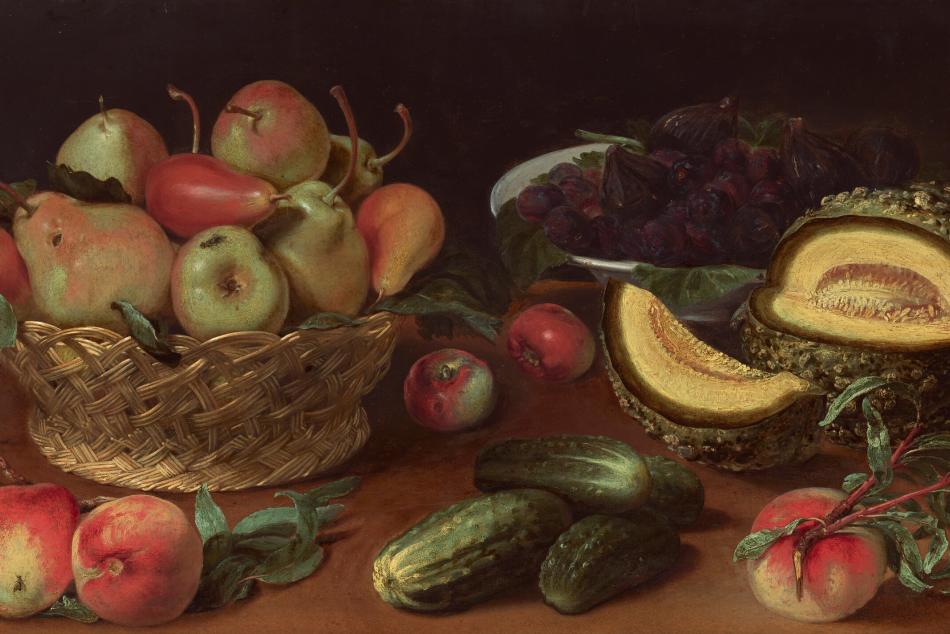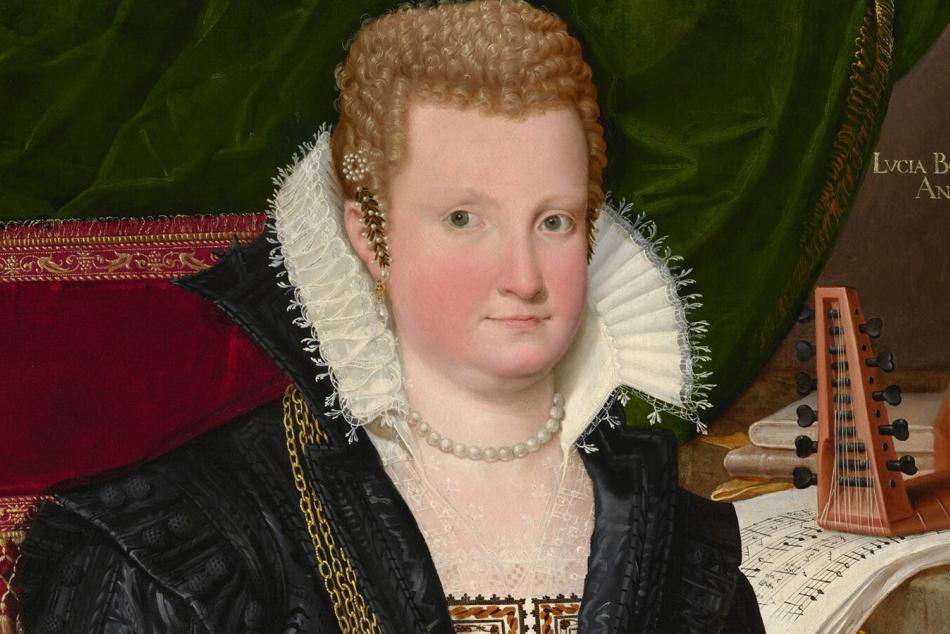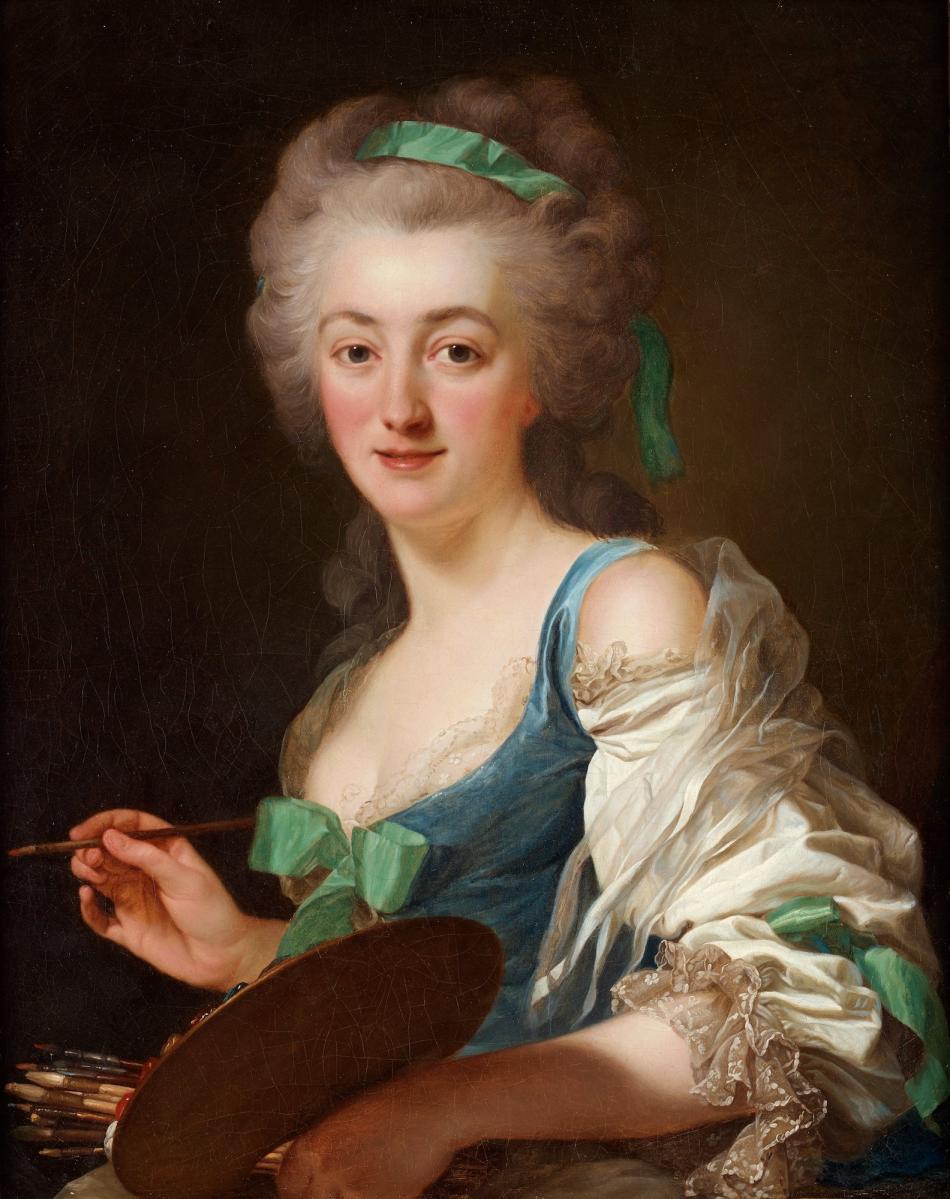Anne Vallayer-Coster Painting, Missing for Centuries, Now at the National Gallery

This painting was priceless to its creator, Anne Vallayer-Coster.
The 18th-century French painter made Still Life with Flowers in an Alabaster Vase and Fruit at the peak of her career. By then, Vallayer-Coster was a longtime member of the exclusive Royal Academy of Painting and Sculpture, one of few women ever admitted. Her clients included some the most powerful people in French society—like Queen Marie Antoinette.
In 1783 Vallayer-Coster presented the ambitious painting at the famed Salon exhibition. Held every two years, this government-sponsored event featured the latest from French artists.
Vallayer-Coster was already known for her still lifes, and this one was instantly popular. She got many requests to purchase the canvas, but denied them all. Reportedly, she believed it to be her best work. Vallayer-Coster kept the painting in her personal collection until her death.
It was sold at auction to a family member after her husband’s passing—and then never seen publicly again. “We knew about the painting, but we didn’t know where it was,” says Aaron Wile, associate curator of French paintings.
In 2022 Still Life with Flowers in an Alabaster Vase and Fruit reappeared. A family had kept the painting for generations, unaware of its significance. Remarkably the work was in almost pristine condition, even complete with its original frame. Now, it joins our collection.

Still Life with Flowers in an Alabaster Vase and Fruit
Vallayer-Coster’s painting is so lush it’s almost hard to focus your eye. The opulent bouquet features more than a dozen different flowers, from lavender hydrangeas to crimson poppies. All are at the peak of freshness. And the artist carefully considered the placement of each bloom. “She shows every kind of texture, color, and petal. You can appreciate the flowers and petals individually, but also as an ensemble. It’s masterfully coordinated,” Wile explains.
The alabaster vase builds the feeling of abundance. Rich details adorn its rim: a garland of fruits and flowers and a bronze child satyr (half man, half goat). This imagery alludes to Bacchus, the Greek god of fruitfulness and wine.
A bunch of grapes and stack of peaches rest on the marble table. These fruit were common in still lifes of the day and in the Dutch paintings that many painters used as inspiration. Less expected? A pineapple.
Europeans had been fascinated by the tropical fruit since Christopher Columbus brought it across the Atlantic on his second voyage from the Americas in 1496. Pineapples were difficult to grow in the colder climate and so very rare. They became a symbol of luxury in colonial France and Britain. Wall hangings of pineapples decorated Queen Marie Antoinette’s private apartment.
This opulent imagery would have surely appealed to a high-paying customer. So why did Vallayer-Coster choose to keep the painting for herself? Maybe as a reminder of her artistic gifts. Or maybe as a personal souvenir of her wild success. Having reached a point where she didn’t need to sell every painting, she could keep and cherish this one.
Still Life with Flowers helps tell an important story about women artists achieving new levels of success and recognition in late-18th-century France. Like her contemporaries Élisabeth Louise Vigée Le Brun and Adélaïde Labille-Guiard, Vallayer-Coster was famous in her own time.
But while Vigée Le Brun remains well known today, not many of us are familiar with Vallayer-Coster.
Anne Vallayer-Coster’s Rising, and Falling, Star
Anne Vallayer was born in Paris in 1744. Her father was a goldsmith, and her mother took over the shop upon his death. From her family, Vallayer inherited an attention to detail. From her beloved teacher, watercolorist Madeleine Françoise Basseporte, she learned to observe and paint flowers from life. And she may have learned to handle oil paint from landscape painter Claude Joseph Vernet. All this training prepared her well to make the still lifes she is best known for.
Vernet also supported Vallayer in another important aspect of being an artist—gaining recognition. He was a member of the Royal Academy of Painting and Sculpture. And he presented Vallayer-Coster for admission when she was only 26.
While women artists were not uncommon, the exclusive academy rarely accepted them. Only three other women were members at the time of Vallayer-Coster’s admission, and they were all wives or daughters of members. The academy then set a rule to allow four women members at any given time. (Vigée Le Brun and Labille-Guiard would not be granted membership until more than a decade later when two of the existing women members died.) And women’s memberships didn’t come with full privileges. For example, women weren’t allowed to participate in nude drawing classes.
Nonetheless, “membership in the academy was essential,” explains Wile. It not only granted status but also gave members the opportunity to present their work in biannual Salon exhibitions. The Salon gave women artists crucial exposure to both critics and collectors. Hundreds of thousands came to discover new artists or see the latest from established ones. New works packed the walls of the Louvre Palace from floor to ceiling.
Vallayer-Coster made her Salon debut the year after joining the academy. The artist’s still lifes astounded reviewers, especially given her youth. Her early works closely followed the model of French still life painter Jean Siméon Chardin. Eventually she shifted from arrangements of objects like Still-Life with Tuft of Marine Plants, Shells and Corals to focus on floral still lifes, which became her bread and butter. She quickly made a name for herself. Contemporary critic Denis Diderot called her works astonishing, enchanting, and unrivaled.
Her compositions also caught the attention of Queen Marie Antoinette. The queen became both a patron and, it seems, a friend—she was a witness to Vallayer-Coster’s wedding. This association was crucial to Vallayer-Coster’s success. As Wile notes, “Having the patronage of someone like Marie Antoinette almost guaranteed fame and financial success.” The queen commissioned portraits of herself and her daughters. She even helped Vallayer-Coster secure a studio at the Louvre.
Vallayer-Coster’s royal support came to an end with the French Revolution, which deposed the monarchy. But her choice of genre may have been her saving grace. Portraitist Vigée Le Brun, for example, was forced to flee because of her associations with the queen. Her still lifes may have allowed Vallayer-Coster to stay under the radar. She even found buyers in the new government—she made several paintings for Napoleon’s first wife, Empress Joséphine de Beauharnais.
Vigée Le Brun and Labille-Guillard’s portraits give us a direct look at individuals from the period. Vallayer-Coster’s focus on still lifes, which reflect society less directly, may also be why her art is less familiar to us today.
You may also like

Article: Three Women Artists You May Not Have Heard Of
Meet the 17th-century painters Fede Galizia and Gesina Ter Borch. And see the only known work by Caterina Angela Pierozzi.

Article: Lavinia Fontana and Lucia Bonasoni Garzoni: Talented 16th-Century Women
Author and art historian Katy Hessel tells the story of these Great Women Artists.






